I’ve lied on every job application I’ve sent. The truth is, in my life previous to UX I was a stripper…. for 13 years to be precise. Actually, I’m still lying, I currently am a stripper one year post-grad into my job search.
I’m writing this to communicate to the professional world that it is not in spite of my career as a stripper that I will succeed as a UX designer, it is because of it that I will.
Because of the way society views those in my particular line of work, it’s typically frowned upon to include my career on a résumé with bulleted points — despite the fact that my work has allowed me to pursue my passions, funded my educational career, paid for every one of my basic living necessities like housing & transport, and not to mention, taking me on a few tropical vacations.
In addition to my work as a stripper supporting my adult life, it did one thing for me that I did not expect — it gave me the skills that laid the foundation for my career as a UX designer.
I’ve decided the best way to end this insanity is to stop doing what I’ve been doing and tell the truth with 13 Reasons why you should hire a stripper for your UX team.
1. Empathy. As UX designers we are tasked to question how our own biases can negatively affect the users we aim to help. If our goal is to bring empathy to the table, how then can we not do the same for our colleagues from different walks of life?
The best strippers close big sales and acquire returning customers because we use empathy to ask deeper questions that lead to intimacy. Strippers are masters of empathy because without it there is no authenticity in our offer. Without authenticity, they cannot trust us. And without trust, there is less enjoyment in their experience. Everyone at some point has been the target of a pushy salesperson with the sole objective to put our money in their bank account. The hard sale is redundant for the seller, suspicious for the buyer, and overall less effective if the goal is to retain a loyal customer.
Which scenario is easier: pushing a hard sale on a new customer every time or curating a unique and connected experience that keeps the same customer coming back?
In our UX world and in the club world an empathetic approach is necessary for authentic connection, trust, and an enjoyable experience for everyone involved.
2. Accessibility. We talk about empathy externally with stakeholders and on our social channels often, but within our organizations when do we ever address our own privileges that disconnect us from those with different circumstances and backgrounds? If you’re lucky enough to work for a company that has a DEI policy, you’re in a good place, but even so how many of us have actually done personal development work to address sexism, racism, ableism, classism, and any other “isms” that are functions of a larger problem of power hierarchy in modern day society? (Side note: I motion for “sex workers” a protected identity category in company DEI policy literature.)
Sex workers are known to live on the margins and often deal with social isolation. As someone who has experienced this firsthand, it’s opened my eyes to what it feels like to be dismissed and have doors closed on me because I’m doing something that others don’t do for a living wage.
Having this experience opened my heart to people who don’t respond to technology the same way able-bodied people do. I’ve had customers who are confined to wheelchairs, have developmental disabilities, and suffer from PTSD. My customers’ disabilities changed the way I interacted with them and therefore have changed the way I think about their experience in situations that people without those disadvantages don’t have to think about. I think now with standards in mind for those that have less to work with and who are treated below standard because of their disabilities.
3. Time management. aka HUSTLE. As a dancer every minute I’m at work counts. A minute wasted cuts into my profits for the night. If one song = $30 and I spend 2 songs talking to a customer who doesn’t buy, then guess what? I essentially paid my customer $60 to waste my time. Do you want someone who is motivated to manage their time and efforts for the best ROI at your company or someone who has never had to hustle?
Stripping also taught me that I am not an unlimited resource, much like time. I learned quickly that I had to plan accordingly and make tradeoffs when I needed to replenish other parts of my life. Because of this job, I reframed how I looked at my time and energy and established boundaries with myself and others around it. Now that I knew how much my time was worth, I could ask myself what was worth outsourcing and what was non-negotiable. Should I spend the day meal prepping and cleaning and miss work tonight? No, I’ll pay someone to do it for me. Is staying in to write this article worth skipping work because it will get me noticed and closer to a 6-figure salary offer? Absolutely.
4. Growth Mindset. Most people are not aware that strippers do not get paid hourly. In fact, we all pay a varying rate of “house fees” to work at our clubs, similar to how your hair stylist pays a booth rental fee to work at a salon. Our fees can run anywhere from $50-$150 per shift on average, not including the percentage the club takes from our sales and additional tip-outs to other staff members. How many designers do you know would pay to do their job and then try to recoup their losses by the end of their work day? It takes an incredible amount of self-affirmation to walk in daily in the red and leave in the black. We are in a constant review of our performance each and every shift. What do you think your design team could produce if every workday ended with a performance review?
5. Strategy. At the beginning of my career, I didn’t want to work evening shifts because I wanted to have a social life and relationships outside of work. I knew working more dayshifts would be helpful but also knew that there were fewer customers in the club during the day. So I made a strategy to work every weekend shift I could until I got enough customers’ phone numbers to advertise my weekday availability to them. Eventually, I had enough regular customers to visit me on my weekdays so I could end my nights by 7 pm instead of 3 am.
I also learned to calculate my earnings average by an hour so that I could best predict my earning outcome. If I were to have a slower start to a shift, I could assess how far behind I was on my average as the night progressed and use that deficit to pitch a bigger sale to a higher-value customer. This strategy helped me customize multiple offers to match my customers’ needs and more opportunities to upsell. Staying present where my earnings were hour by hour gave me the confidence and flexibility to maximize my profits.
We have to work with what we have, like an MVP to get the job done. I knew some parts of the job would take longer to master, such as being a phenomenal stage performer, so I invested in training to improve that skill over time while I still had my youthful looks ahead of me. Eventually, that skill became foolproof and is now my best closer for high-value customers. Similar to agile development when that resource grows enough we return to reinvest — we build to scale only when what we have right now is viable.
6. Divergence & convergence. One of the best parts about the job is the option to be a lone wolf or hustle with my sisters. What I learned was that I only knew what I only knew. Having worked alongside other dancers I got a chance to pick up new sales approaches and styles of working. When I went back to working alone I got a chance to try on these new frameworks and lines and see how effective they were. This broadened my pool of clientele and partnerships and also gave me the joyful experience of helping other strippers make money.
7. Research methods. While our objective is closing a sale, we also employ the research process as part of our job. I had worked for over a decade before I had ever heard the terms “participatory observation” or “qualitative interviews”. A few weeks into studying UX I had realized much of what I had been doing in the sales qualification process at my club job had paralleled the qualitative interview process in UX. Where I found myself asking my customer what his favorite restaurant was or what he didn’t like about a particular experience he had at another club helped to inform me what his real pain points were. Then I could curate a fantasy that matched his style of luxury. The most difficult part of conducting qualitative interviews was stopping the solution wheels from turning and avoiding leading questions. (Keep reading to #9 for more on stripper persuasion.)
Stripping helped me get comfortable speaking with users in qualitative research interviews and I’m so grateful for it.
8. Customer journeys and personas. After a decade of asking qualitative questions, I had begun to see parallels between different personality types and had essentially built several personas in my mind. This helped me to figure out which types of rooms a customer would be most likely to buy, what kind of attention he wanted, or what type of costume I should wear. I was able to use mental empathy mapping to see where their pain points were in their lives and what I could do to make their new journey a better one.
9. Buy-in. The same charisma that sold high-price champagne rooms is the same persuasiveness I use with stakeholders. While our design destination is for the user, we are driving with the stakeholder’s mindset in the passenger seat. As we all know one of the hardest parts can be convincing the stakeholders that their personal objections, preferences, and expectations do not make them the user.
We must be one step ahead and prepare to know how these factors play into the solutions we create. We must know them better than they know themselves.
As it is in UX so it is in the club that a great deal of presence and intuition are required to not push our stakeholders but to guide them away from getting in their own way. The trick is to let them think it’s their idea.
For example, one of my customers thought he wanted a young bubbly 20-something, but then realized he really wanted someone closer to his age that could talk about his divorce over an old fashioned.
We can’t change our stakeholders’ values, demographic, and experiences, but through storytelling, we help them relate to a shared feeling with their users despite differing experiences. We focus on provoking feelings that connect one human dot to another on the map of human life. We change our stakeholders’ minds with storytelling the same way I used the allegory of Star Wars to help my sad, divorced customer see that being abandoned by his father was the source of his workaholism and the end of his marriage. Boom.
I didn’t learn how to persuade HIPPOS in in my design program. I learned how to do this in the club, over and over again, for over a decade. How many other designers can you say have such incredible persuasion & people-reading skills?
10. Brand strategy. While the assumption is that it takes having big assets to make it as a stripper, that stereotype isn’t always true. Now, it can sometimes take big assets to get hired, but that won’t keep business turning.
It took me failing at building an Only Fans following to figure this out. What it takes is having a solid understanding of brand identity. Now, a good majority of my job is asking for a dance here and there, which does make some money. But doing it this way isn’t smart money. Smart people make money come to them.
If I want to catch the biggest whale, I have to find out what that whale eats, where that whale swims, and what that whale’s song sounds like.
It is key that I match my work persona in how I dress, communicate, what I communicate about, dance, what I dance to, etc. to match this customer’s ideal.
I can only attract a certain type of customer if I let what that customer values be expressed in my work persona first.
I must also do this within my boundaries knowing what I value as a person first. I communicate this with emblems, behaviors, attitudes, and interests that establish what my brand is. When I show up as what I value in all aspects of my brand, I don’t have to find the client, the client finds me.
Do you want to work harder or smarter in your business?
11. Testing & iteration. Test early and often is the motto we use in UX to avoid wasting valuable time and money. In the club, I realized I had to get bold about cutting to the chase fast, and do so by trying new approaches with customers.
So I got real about my jokes, approaches, objection rebuttals, and closers and wrote them all down. For each shift that I worked, I picked 2 or 3 to focus on. I would try them out on different customers and if they worked, they got logged as a success to keep using. If they didn’t work I wrote down what my customers’ responses were and strategized on what I would say in response or how I would reword it. Then I went back out there the next night and tried it again.
This process worked with everything in dancing. I tried different wigs to see which ones got me noticed more and new outfits. I kept track of which nights I made the most money with certain looks. I tracked my travels, other clubs, and special events to figure out which ones were profitable. This helped me fine-tune my process to show up as a top earner as I grew into my career.
12. Visual design. While it’s unlikely you’d find a larger representation of artists working at in strip clubs than in any other industry, not all strippers want to be artists. Yet the job requires some degree of creativity in makeup, fashion, personality, or performance.
I am always impressed to see how incredibly meticulous some of my coworkers are at doing their makeup. Their understanding of composition and how to work with color saturation in low lighting is modern-day wizardry.
In my 13 years in the industry, I’ve played multiple characters whose looks evolved with a lot of experimentation. In addition to crafting great makeup looks and costumes, I also made some really fun killer glitter heel designs on my days off work. Here are a few of my favorites.
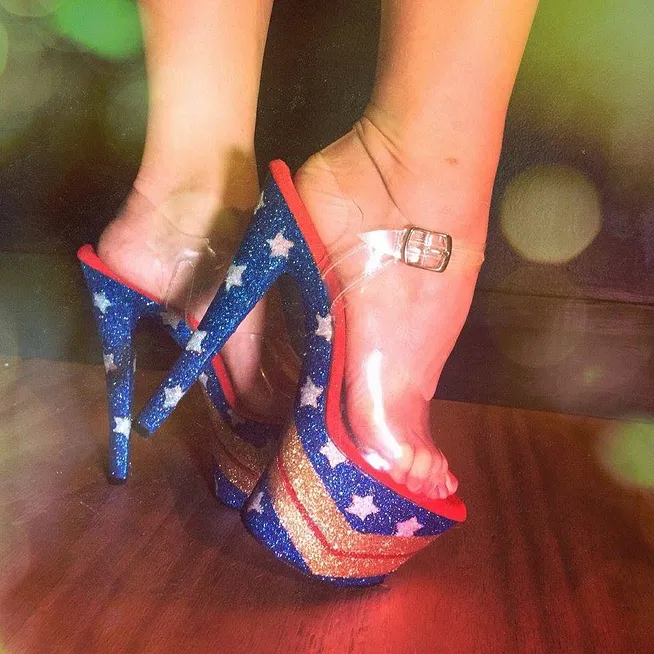
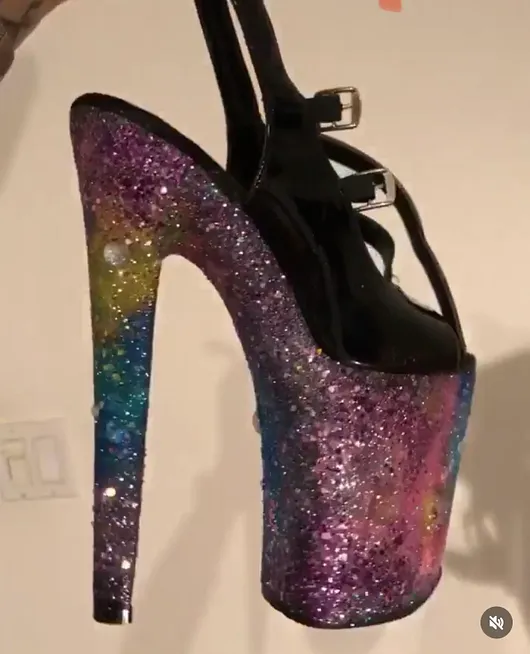
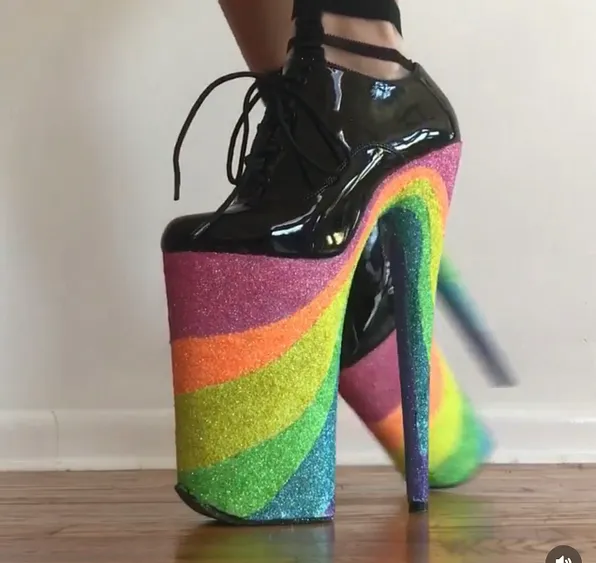
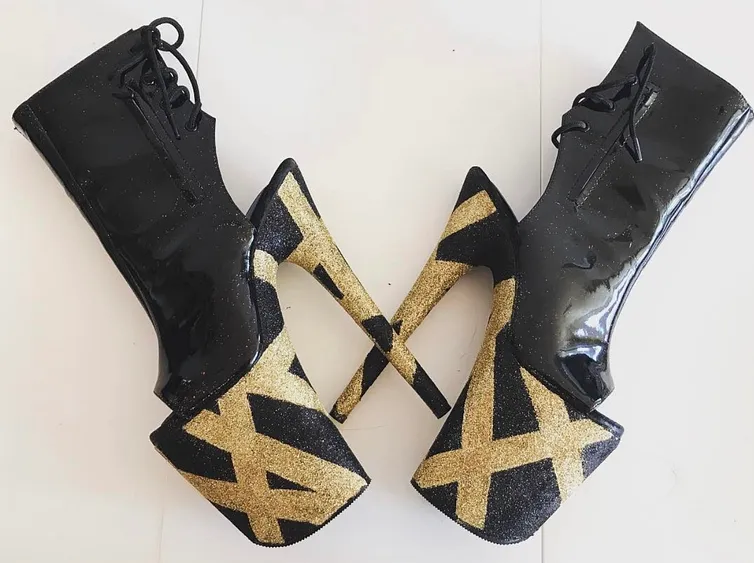

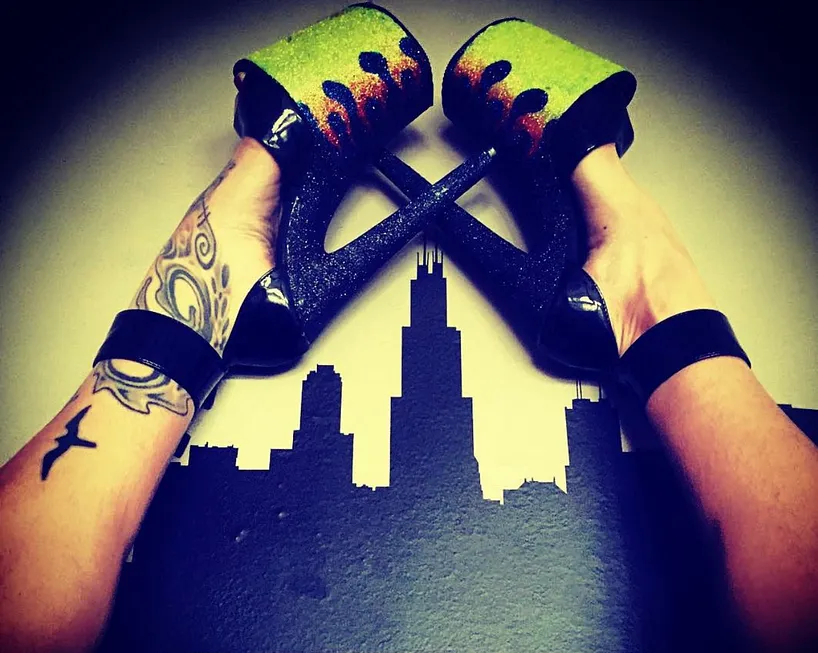
13. Prototyping. If anyone has the skill to make something cheap look really expensive, it’s a stripper. Ask any stripper where to get the best dupes for high-end cosmetics and they will have a list.
We work far too hard to earn what we earn to then lose a large sum to taxes and business upkeep. And we are essentially living the lives of two people in one body so I’ll be damned if my alter ego eats up my profits. Keeping it simple goes a long way long term.
When it comes to cutting corners in UX, I will use whatever I can to save time and money and still get the job done. Can I communicate this with a lo-fi prototype to win over the client? Can I reuse a design system from an old project to cut down on my time on a project? What plug-ins could I use to make this project go faster and eliminate some processes?
Need a proto-magician for your next big project on a short timeline? Hire this stripper.
In Conclusion
If reading that triggered a visceral reaction of superiority and disbelief that someone from the adult entertainment industry could bring value as a UX professional, then congratulations to take the first steps to understand your bias. And if it didn’t, then send this article to someone you know who would be triggered by it. Thank you in advance for your advocacy.
If your goal is to have a great design team, win over the best clients, and have a great culture at work, why wouldn’t you hire this stripper turned UX designer?!








